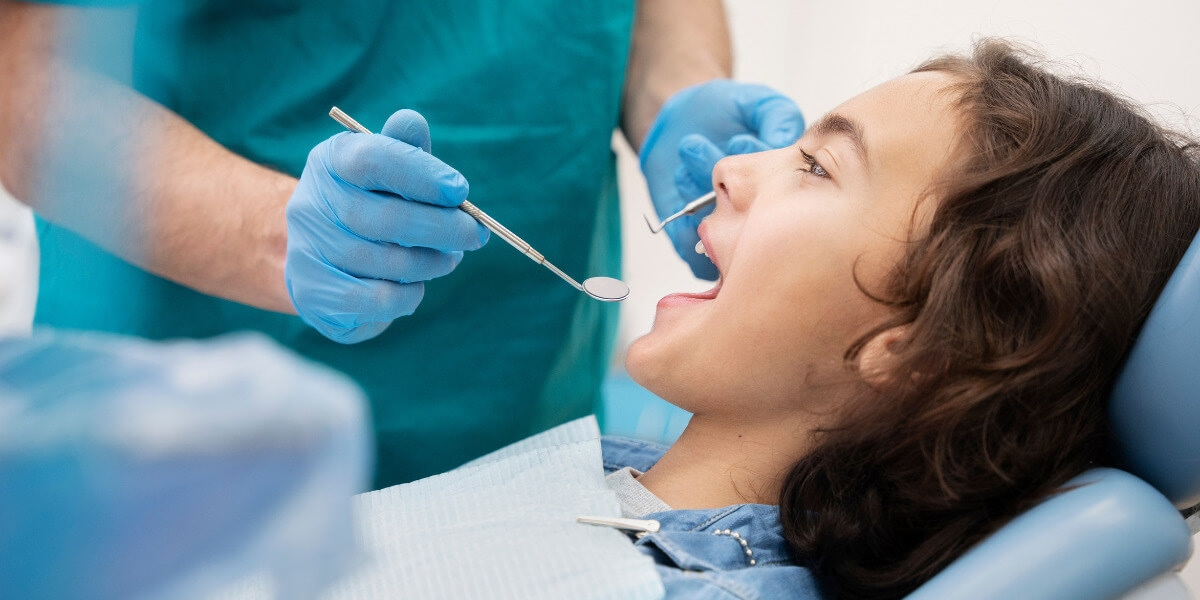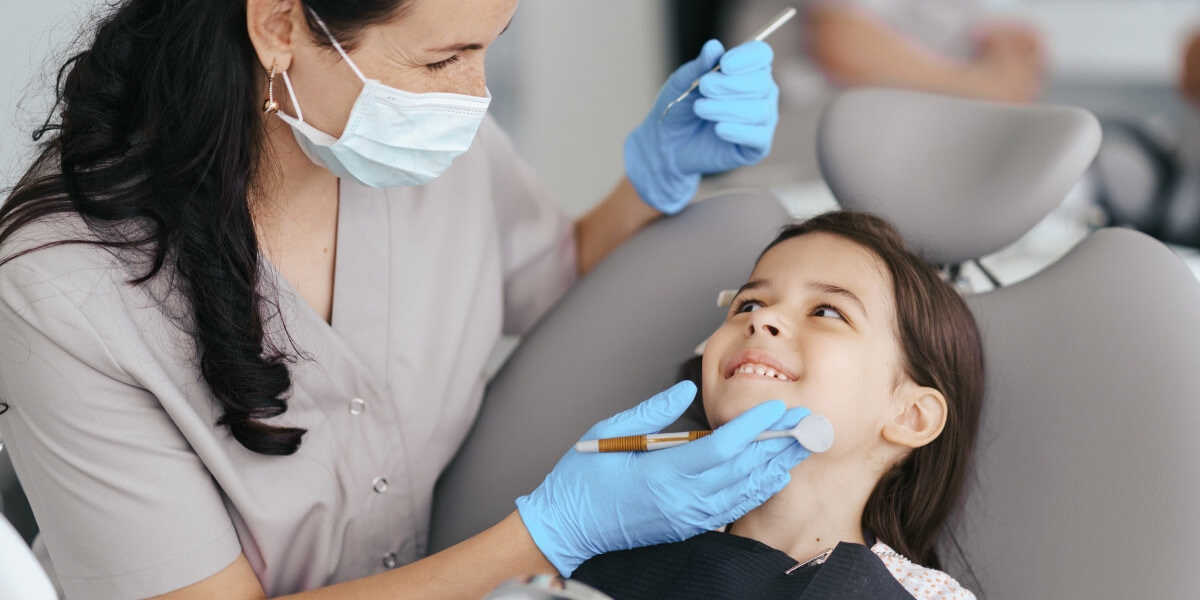How to prevent kids' teeth from decay?
One aspect of our children's health that often gets overlooked is their dental health. Parents should recognize the importance of dental hygiene in promoting the overall well-being of their children. No parent wants to see their child suffer from tooth decay or cavities. So, how can we prevent our kids' teeth from decaying? Here are a few tips to help you maintain your child's dental health:
Start Early
Good dental hygiene should begin when your child's first tooth appears. After feeding, it's important to gently wipe your baby's gums with a clean, damp cloth. As they age and more teeth emerge, introduce a soft-bristled toothbrush and a child-friendly fluoride toothpaste to establish a regular brushing routine.
Practice Proper Brushing Techniques
Teach your child to brush their teeth thoroughly for at least two minutes twice a day. Use circular motions to clean each tooth's front, back, and chewing surfaces. Ensure supervision and assistance until they are old enough to brush independently.
Minimise Sugary Foods and Drinks
Sugar is the primary contributor to the development of dental cavities. Try to minimize your child's intake of sugary snacks and beverages. Please encourage them to choose healthier alternatives like fruits, vegetables, and water. If they do consume sweets, make sure they brush their teeth afterwards.
Regular Dental Check-ups
Regular dental visits for your child are crucial to oral health. Dentists possess the expertise to identify early indicators of tooth decay and administer necessary interventions or counsel to halt any progression. By instilling this practice early on, your child will cultivate a favourable rapport with their dentist, reducing anxiety during future dental appointments.
Sealants and Fluoride Treatments
Dental sealants and fluoride treatments are proven preventive measures that safeguard your child's teeth against decay. These protective measures involve applying thin sealants to the chewing surfaces of molars, creating a barrier that prevents bacteria and food particles from penetrating the gaps. In addition, fluoride treatments strengthen the enamel, making it more decay-resistant.
Lead by Example
Setting a good example for your child by maintaining excellent dental hygiene habits is crucial. Brushing your teeth together as a family and emphasizing the importance of regular dental care can instil healthy habits in your child for years to come.
The health of milk teeth or deciduous teeth is an essential factor in determining the health of permanent teeth. It is important to preserve the milk teeth in the mouth till their actual shedding age to ensure the correct eruption sequence and position of permanent teeth.
Following these easy steps can protect your child from tooth decay and encourage lifelong oral health. Remember, healthy teeth contribute to overall well-being and ensure a confident smile for your precious little ones.
FAQ’s
The approach to treatment is contingent upon various factors, including your child's symptoms, age, and overall health. It is also influenced by the extent of the condition. Typically, in the majority of cases, treatment entails the removal of the decayed part of the tooth, followed by the placement of a filling. Fillings are substances used to restore teeth by repairing the damage caused by tooth decay.
As the condition advances, the discoloured areas will transform into small cavities or holes. Without proper dental treatment, the condition can worsen and cause the tooth's crown to erode, leaving only a small remnant above the gumline. Infections of the tooth can also lead to pus formation in gums and bone and swelling on the face.
A child's primary teeth are usually weaker and more prone to cavities than an adult's. Also, the dexterity with which children can brush their teeth is lesser than that of adults. Parents should be aware of the causes, symptoms, and preventative measures to protect their children's teeth.
Don't despair if your child has a cavity. Proper oral hygiene, avoiding sugary foods as much as possible, and visiting the dentist often are great steps in cavity prevention in kids. If your child does get a cavity, your dentist can discuss with you your full range of options for cavity treatment and prevention.
Dental fillings are a frequently used method for addressing cavities in both toddlers and older children. Fillings can be applied to both primary and permanent teeth. The process involves the removal of the decayed tooth tissue, followed by filling the cavity with either a white composite or cement material.
Dental caries is a more prevalent issue in young children than any other chronic ailment, surpassing conditions like asthma and diabetes. As a matter of fact, statistics from The National Institute of Dental and Craniofacial Research (NIDCR) reveal that approximately 42% of children between the ages of 2 & 11 have experienced dental caries that have impacted their primary teeth.
It can come as a surprise to many parents that tooth decay can initiate as early as the emergence of a baby's teeth, which typically occurs around six months of age. Decay in baby teeth can lead to discomfort and the potential spread of infection. If left untreated, it has the capacity to deteriorate the baby's teeth. Moreover, tooth decay in children can also influence their overall health.
Dentists make every effort to preserve decayed teeth through treatments such as fillings, root canals, and crowns. In cases where these approaches prove ineffective, your dentist may recommend scheduling a tooth extraction. Dental extractions are a routine procedure, and most patients typically tolerate the treatment well. You can expect to receive a numbing shot to ensure the procedure is both painless and comfortable.
Regular brushing is crucial for halting the deterioration of your cavity and preventing the development of additional cavities. Focus on the specific cavity while brushing to remove any remaining food particles from your snacks or meals. This diligent brushing can effectively impede the cavity's advancement. However, cavities and tooth decay cannot be reversed. Tooth decay has to be cleaned by a professional, and the cavity created can be restored with the help of filling materials to restore function and esthetics.
Ensuring sufficient Vitamin D levels is crucial in reducing the risk of dental caries or developmental dental problems among children.
In summary, fillings for your child's primary teeth are generally as vital as fillings for their permanent teeth. Taking care of your child's primary teeth is crucial for several reasons. Cavities, when left untreated, can result in discomfort and pain, and they can also give rise to other dental issues, including the risk of infection.
Although many parents have concerns about whether cavity fillings will cause discomfort for their children, the reality is that they typically do not inflict significant pain. Various options for dental fillings are accessible for kids, and there are strategies and advanced instruments to enhance the overall comfort of the experience.
Dr. Mimansa Bhoj
BDS, MDS (Oral and Maxillofacial Surgeon)
University Gold medalist
About the Author
Dr. Mimansa is a highly accomplished oral and maxillofacial surgeon with a wealth of experience in her field. With a strong academic background and numerous gold medals, she has treated over 5000 patients for various oral and maxillofacial problems. Dr. Mimansa has practiced in different parts of India and has learned from the best in the field, making her an expert in OMFS and Dentistry. Known for her friendly and empathetic approach, she believes in providing treatments with care and compassion to heal her patients. With academic achievements, multiple scientific publications, and her current role as an Associate Professor, Dr. Mimansa is dedicated to providing the highest quality of care. She has also established a safe space, Hope Dental and Esthetic Clinic, during the pandemic, ensuring the utmost safety for patients while providing dental and medical treatments.




